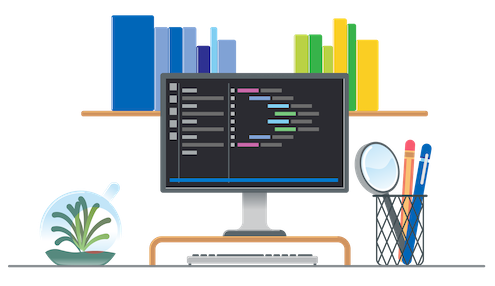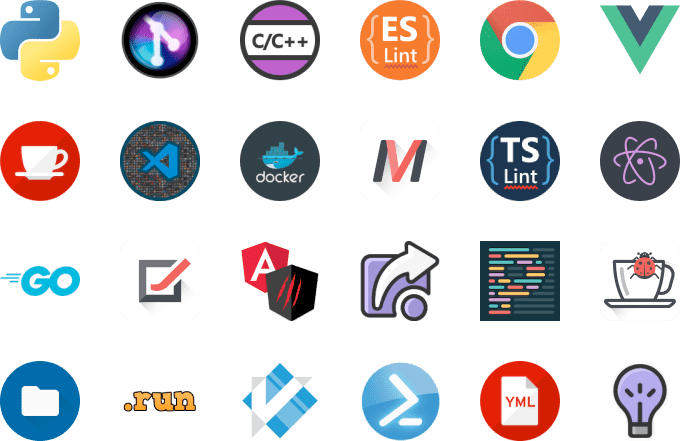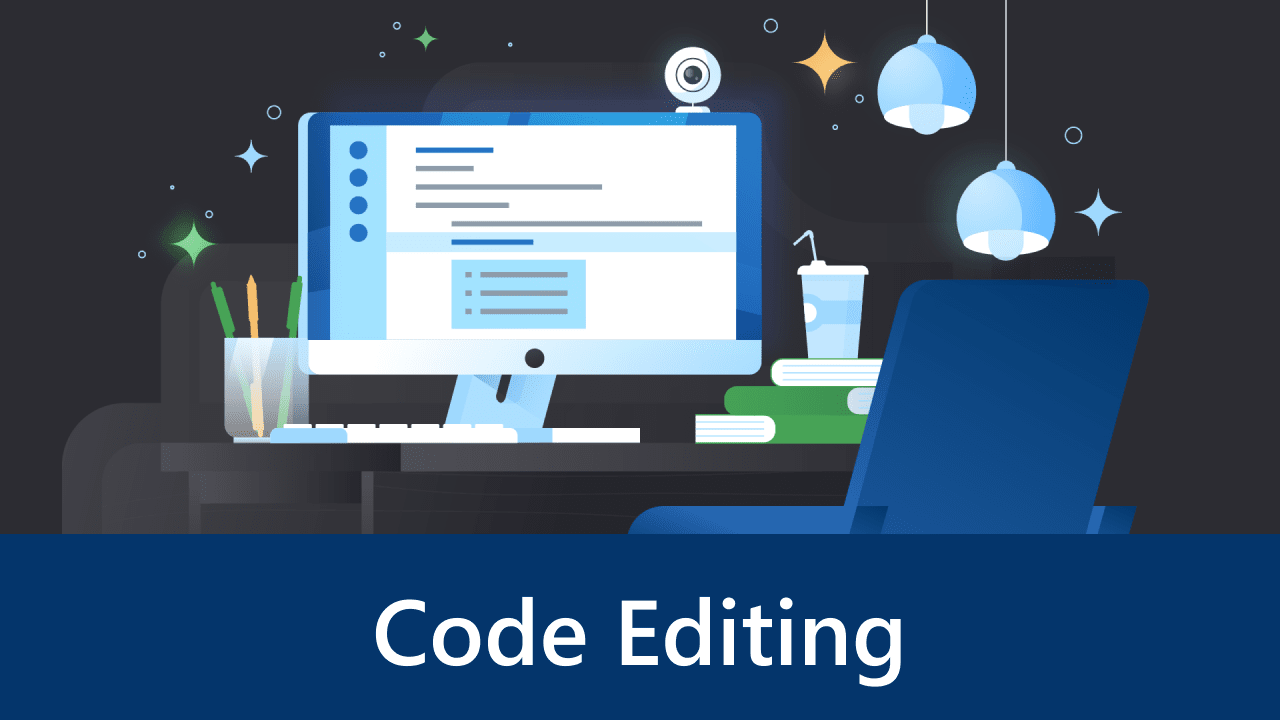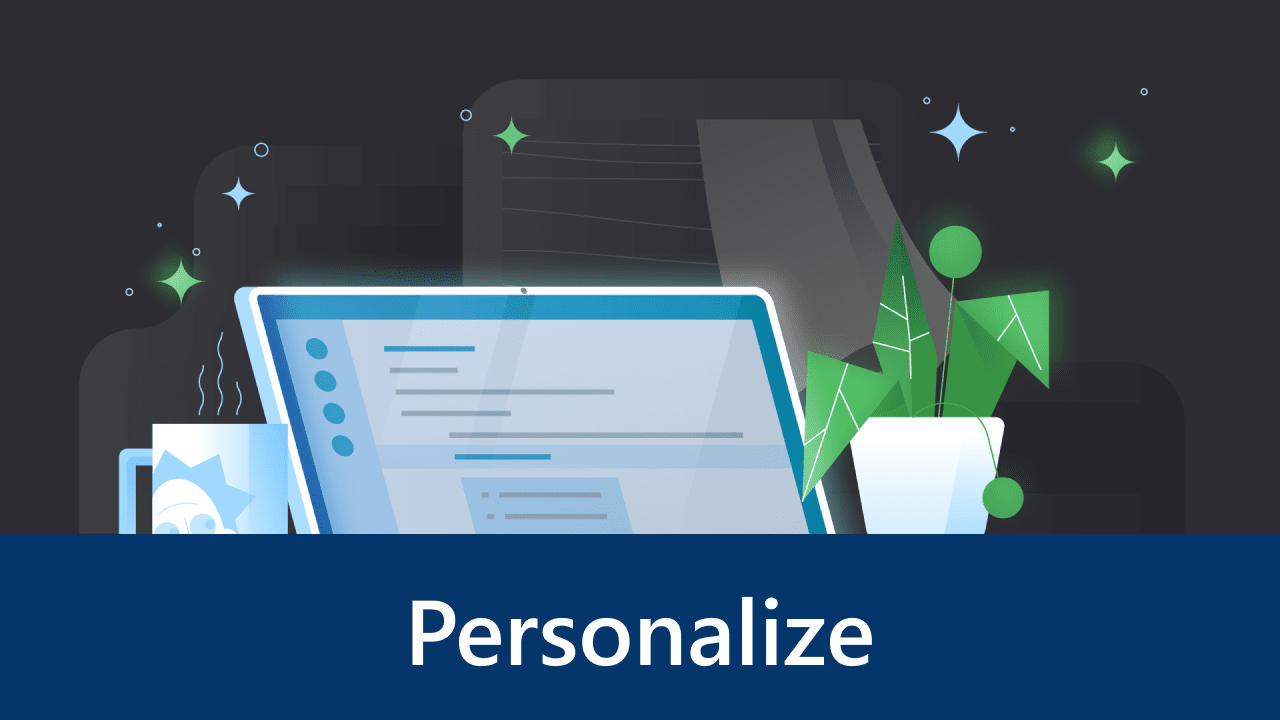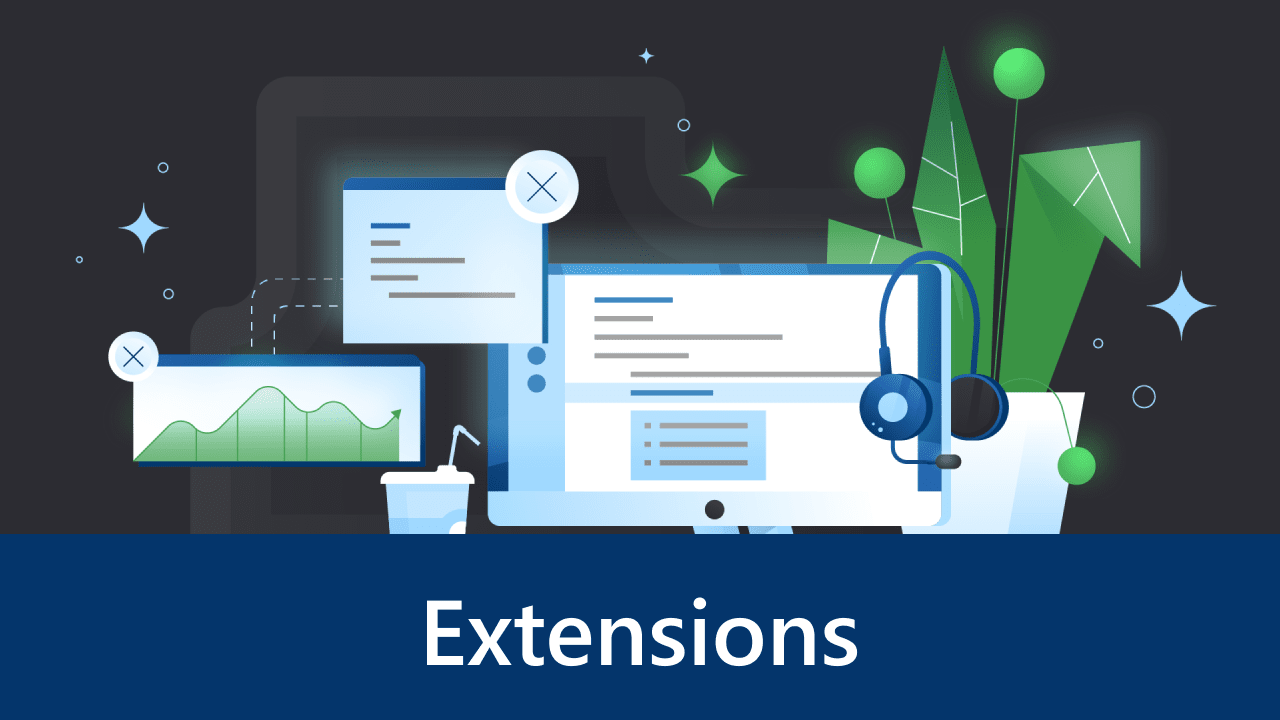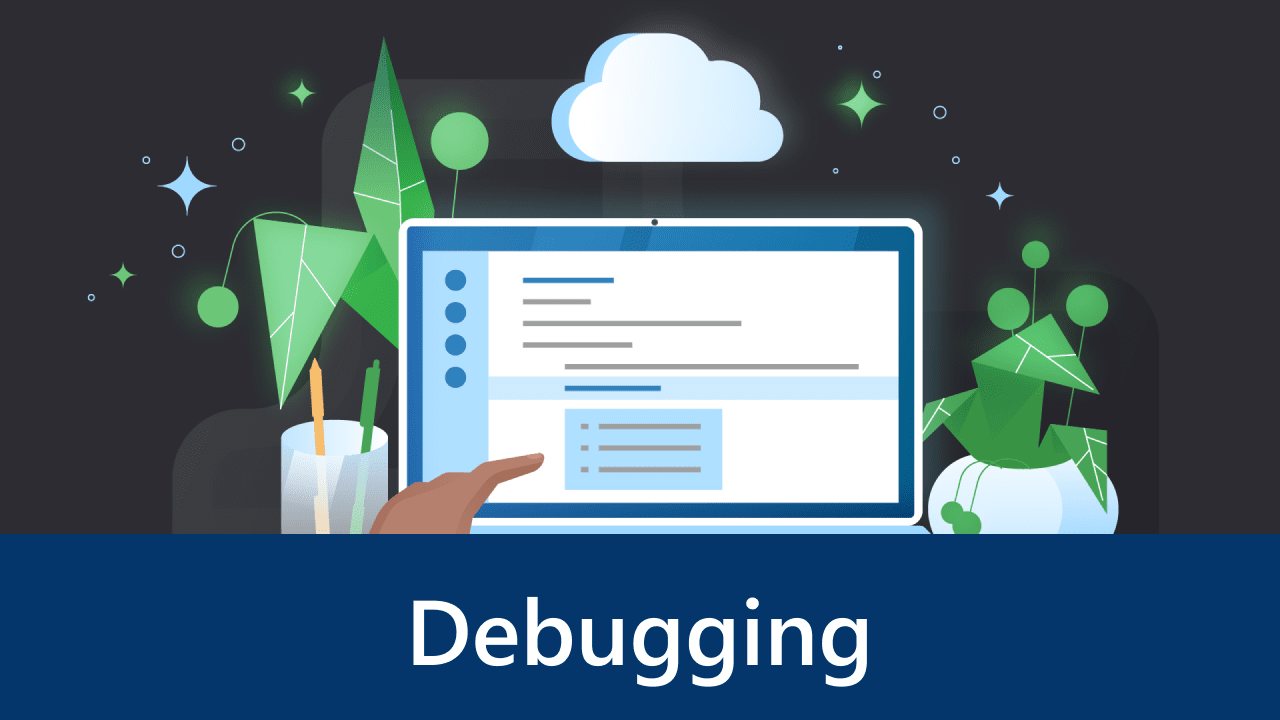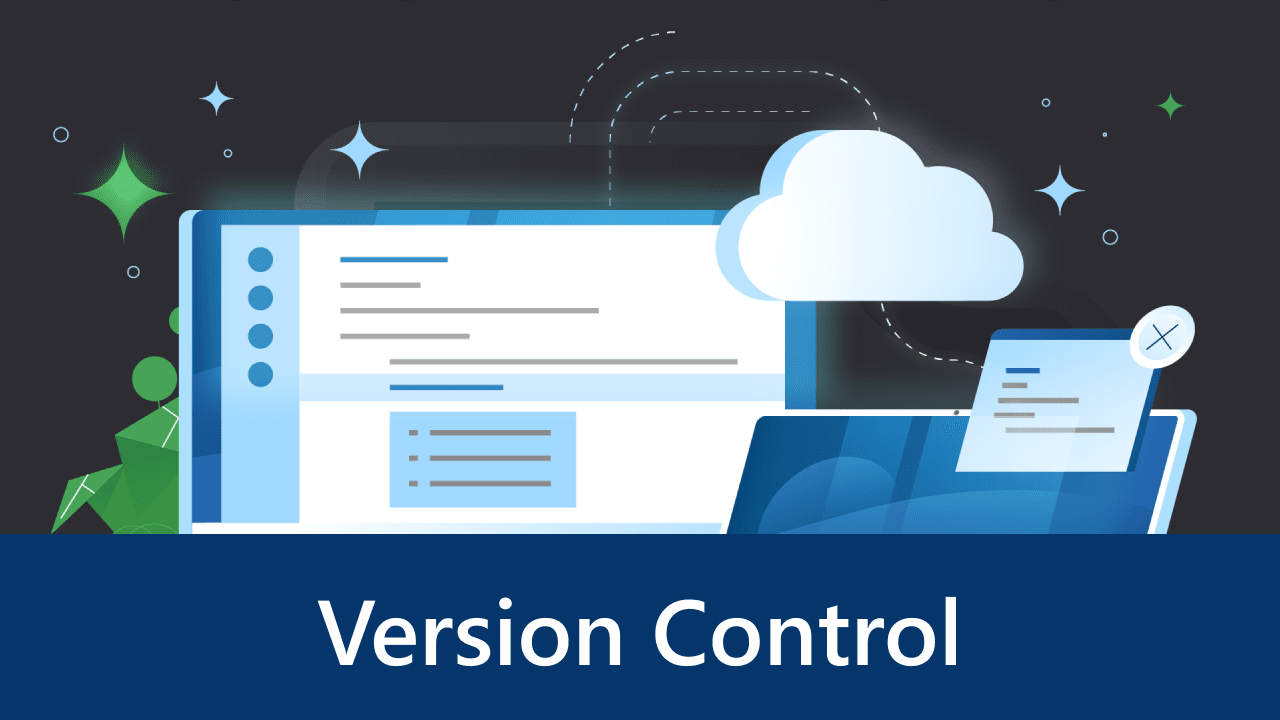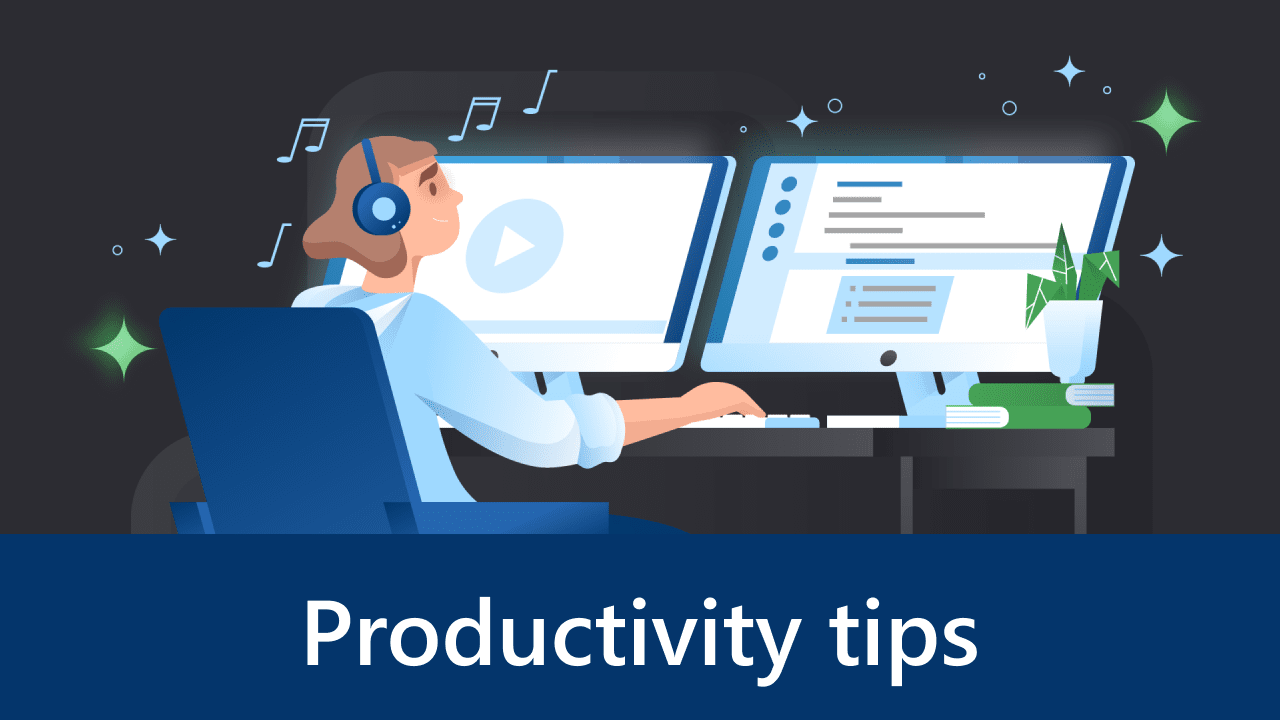майкрософт визуал студио код
Learn to code with Visual Studio Code
Why VS Code?
Collaborate and code remotely
Work together remotely with your teachers or classmates using the free LiveShare extension. Edit and debug your code in real-time, and use the chat and call features to ask questions or discuss ideas together. Whether you’re working on a group assignment or teaching a lesson, you can invite multiple people to join your session and code together. Check out this tutorial on how start using LiveShare.
Code to learn
New to coding? Visual Studio Code highlights keywords in your code in different colors to help you easily identify coding patterns and learn faster. You can also take advantage of features like IntelliSense and Peek Definition, which help you understand how functions can be used, and how they relate to one another.
Fix errors as you code
As you code, Visual Studio Code gives you suggestions to complete lines of code and quick fixes for common mistakes. You can also use the debugger in VS Code to step through each line of code and understand what is happening. Check out guides on how to use the debugger if you’re coding in Python, Java, and JavaScript/TypeScript/Node.js.
Make it yours with custom themes and colors
You can change the look and feel of VS Code by picking your favorite fonts and icons and choosing from hundreds of color themes. Check out this video on personalizing VS Code.
Compare changes in your code
Use the built-in source control to save your work over time so you don’t lose progress. See a graphical side-by-side view to compare versions of your code from different points in time. Check out this quick video on how to get a side-by-side «diff».
Code inside Notebooks
If you want to try a project in data science or data visualization, you can use Jupyter notebooks inside VS Code. Run your code step-by-step, and visualize and interact with your data, variables, graphs, and plots. Check out this tutorial on how to work with Jupyter Notebooks inside VS Code.
Code editing. Redefined.
Free. Built on open source. Runs everywhere.
By using VS Code, you agree to its license and privacy statement.
Meet IntelliSense.
Go beyond syntax highlighting and autocomplete with IntelliSense, which provides smart completions based on variable types, function definitions, and imported modules.
Print statement debugging is a thing of the past.
Debug code right from the editor. Launch or attach to your running apps and debug with break points, call stacks, and an interactive console.
Git commands built-in.
Working with Git and other SCM providers has never been easier. Review diffs, stage files, and make commits right from the editor. Push and pull from any hosted SCM service.
Extensible and customizable.
Want even more features? Install extensions to add new languages, themes, debuggers, and to connect to additional services. Extensions run in separate processes, ensuring they won’t slow down your editor. Learn more about extensions.
Deploy with confidence and ease
With Microsoft Azure you can deploy and host your React, Angular, Vue, Node, Python (and more!) sites, store and query relational and document based data, and scale with serverless computing, all with ease, all from within VS Code.
VS Code for
Want new features sooner?
License and Privacy Terms
By downloading and using Visual Studio Code, you agree to the license terms and privacy statement. VS Code automatically sends telemetry data and crash dumps to help us improve the product. If you would prefer not to have this data sent please go see How to Disable Crash Reporting to learn how to disable it.
Introductory Videos
Start your journey using Visual Studio Code with this set of introductory videos! These videos are designed to give you an overview of VS Code’s various features and quickly get you familiar with them.
Getting Started
Set up and learn the basics of Visual Studio Code.
Duration 5 min minutes
Code Editing
Learn how to edit and run code in VS Code.
Duration 3 min minutes
Personalize
Personalize VS Code to make it yours with themes.
Duration 2 min minutes
Extensions
Add features, themes, and more to VS Code with extensions!
Duration 4 min minutes
Debugging
Get started with debugging in VS Code.
Duration 6 min minutes
Version Control
Learn how to use Git version control in VS Code.
Duration 3 min minutes
Customize
Learn how to customize your settings and keyboard shortcuts in VS Code.
Duration 6 min minutes
Productivity Tips
Become a VS Code power user with these productivity tips.
Visual Studio Code on Windows
Installation
Alternatively, you can also download a Zip archive, extract it and run Code from there.
User setup versus system setup
VS Code provides both Windows user and system level setups. Installing the user setup does not require Administrator privileges as the location will be under your user Local AppData (LOCALAPPDATA) folder. User setup also provides a smoother background update experience.
The system setup requires elevation to Administrator privileges and will place the installation under Program Files. This also means that VS Code will be available to all users in the system.
See the Download Visual Studio Code page for a complete list of available installation options.
32-bit versions
If you need to run a 32-bit version of VS Code, both a 32-bit Installer and Zip archive are available.
Updates
VS Code ships monthly releases and supports auto-update when a new release is available. If you’re prompted by VS Code, accept the newest update and it will be installed (you won’t need to do anything else to get the latest bits).
Note: You can disable auto-update if you prefer to update VS Code on your own schedule.
Windows Subsystem for Linux
Windows is a popular operating system and it can be a great cross-platform development environment. This section describes cross-platform features such as the Windows Subsystem for Linux (WSL) and the new Windows Terminal.
Recent Windows build
Make sure you are on a recent Windows 10 build. Check Settings > Windows Update to see if you are up-to-date.
Windows as a developer machine
With WSL, you can install and run Linux distributions on Windows. This enables you to develop and test your source code on Linux while still working locally on your Windows machine.
See the Developing in WSL documentation to learn more or try the Working in WSL introductory tutorial.
New Windows Terminal
Available from the Microsoft Store, the Windows Terminal (Preview) lets you easily open PowerShell, Command Prompt, and WSL terminals in a multiple tab shell.
Next steps
Once you have installed VS Code, these topics will help you learn more about VS Code:
Common questions
What command-line arguments are supported by the Windows Setup?
VS Code uses Inno Setup to create its setup package for Windows. Thus, all the Inno Setup command-line switches are available for use.
Scrolling is laggy and not smooth
On certain devices, editor scrolling is not smooth but laggy for an unpleasant experience. If you notice this issue, make sure you install the Windows 10 October 2018 update where this issue is fixed.
I’m having trouble with the installer
Try using the zip file instead of the installer. To use this, unzip VS Code in your AppData\Local\Programs folder.
Note: When VS Code is installed via a Zip file, you will need to manually update it for each release.
Icons are missing
I installed Visual Studio Code on my Windows 7 or 8 machine. Why are some icons not appearing in the workbench and editor?
Using the Command Prompt:
Using the Registry Editor (regedit):
Setting up Visual Studio Code
Getting up and running with Visual Studio Code is quick and easy. It is a small download so you can install in a matter of minutes and give VS Code a try.
Cross platform
VS Code is a free code editor, which runs on the macOS, Linux, and Windows operating systems.
Follow the platform-specific guides below:
VS Code is lightweight and should run on most available hardware and platform versions. You can review the System Requirements to check if your computer configuration is supported.
Update cadence
VS Code releases a new version each month with new features and important bug fixes. Most platforms support auto updating and you will be prompted to install the new release when it becomes available. You can also manually check for updates by running Help > Check for Updates on Linux and Windows or running Code > Check for Updates on macOS.
Note: You can disable auto-update if you prefer to update VS Code on your own schedule.
Insiders nightly build
If you’d like to try our nightly builds to see new features early or verify bug fixes, you can install our Insiders build. The Insiders build installs side-by-side with the monthly Stable build and you can freely work with either on the same machine. The Insiders build is the same one the VS Code development team uses on a daily basis and we really appreciate people trying out new features and providing feedback.
Portable mode
Visual Studio Code supports Portable mode installation. This mode enables all data created and maintained by VS Code to live near itself, so it can be moved around across environments, for example, on a USB drive. See the VS Code Portable Mode documentation for details.
Additional components
VS Code is an editor, first and foremost, and prides itself on a small footprint. Unlike traditional IDEs that tend to include everything but the kitchen sink, you can tune your installation to the development technologies you care about. Be sure to read the Additional Components topic after reading the platform guides to learn about customizing your VS Code installation.
Extensions
VS Code extensions let third parties add support for additional:
Extensions integrate into VS Code’s UI, commands, and task running systems so you’ll find it easy to work with different technologies through VS Code’s shared interface. Check out the VS Code extension Marketplace to see what’s available.
Next steps
Once you have installed and set up VS Code, these topics will help you learn more about VS Code:
If you’d like to get something running quickly, try the Node.js tutorial walkthrough that will have you debugging a Node.js web application with VS Code in minutes.
Common questions
What are the system requirements for VS Code?
How big is VS Code?
VS Code is a small download ( New Project dialog or pre-installed project templates. You’ll need to add additional components and scaffolders depending on your development interests. With scaffolding tools like Yeoman and the multitude of modules available through the npm package manager, you’re sure to find appropriate templates and tools to create your projects.
How do I know which version I’m running?
On Linux and Windows, choose Help > About. On macOS, use Code > About Visual Studio Code.
Why is VS Code saying my installation is Unsupported?
VS Code has detected that some installation files have been modified, perhaps by an extension. Reinstalling VS Code will replace the affected files. See our FAQ topic for more details.
How can I do a ‘clean’ uninstall of VS Code?
The folder locations will vary depending on your platform:
